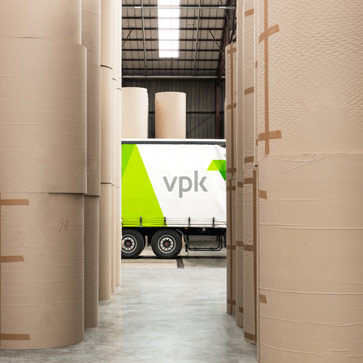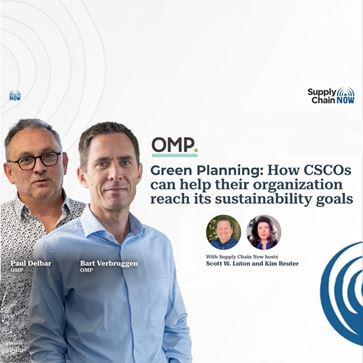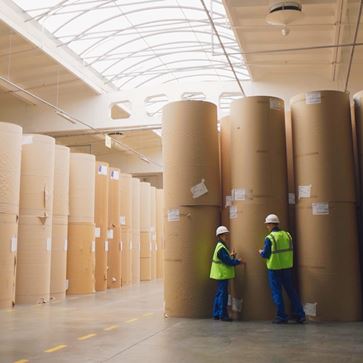
How Green Planning paves the way for a sustainable supply chain
Supply chain sustainability is taking center stage
As sustainability becomes a crucial focus for businesses globally, the critical role of supply chain planning in achieving sustainability goals is increasingly evident. But how can supply chain planning help companies reduce their supply chain’s environmental impact without sacrificing profitability?
OMP’s Green Planning leverages advanced supply chain planning to contribute to a company’s sustainability goals while balancing other business objectives. It integrates sustainability metrics into the advanced supply chain planning system, allowing planners to fully consider the company’s sustainability targets in every supply chain decision on every horizon.
"The beauty of planning is its reach. It can encompass everything from daily operations to long-term sustainability strategy, making it a powerful tool for driving positive change on a broad scale."
Business leader during OMP’s 2024 Sustainability Council
Want to make your supply chain sustainable and profitable?
Supply chains as principal drivers of transformation
Supply chains are emerging as one of the principal pivot points in the transformation toward a carbon-neutral, circular, fair, and sustainable economy, which is essential for humanity’s future in the face of climate change, biodiversity loss, resource scarcity, and other environmental threats.
A major driver is the enormous environmental footprint of the world’s supply chains. For example, a McKinsey study says that over 80 percent of greenhouse gas emissions in many consumer goods organizations originate from their supply chain.
Reducing a supply chain’s environmental footprint involves several key considerations. What is being produced? How and where is it being produced? What materials are being sourced? What packaging is being used and discarded? How are materials being shipped between locations? How much energy is being consumed for logistics? Who is buying the products, and how will they use them? What happens when the products reach end-of-life? The list is long but not impossible to address with the right tools and support.
Smarter planning for sustainable impact
Curious about how strategic planning can drive sustainability? Explore three compelling cases where companies have achieved significant sustainability impacts through smarter planning. Read the full story via the link below and discover how strategic initiatives led to greener transport solutions and other sustainability improvements.
 Greener transport through smarter planning
Greener transport through smarter planning
A consumer goods giant transformed its inefficient truck transport system by switching to daily mixed-product shipments. This change, powered by advanced supply chain planning, significantly reduced transport miles and CO2 emissions, cut costs, and improved inventory management.
 Reducing waste by optimizing product replacements
Reducing waste by optimizing product replacements
A global consumer goods company optimized its product phase-in and phase-out process to tackle new product launch challenges. Using advanced supply chain planning and sustainability KPIs, the company improved demand insights, managed inventory efficiently, and automated decision-making. This resulted in reduced waste, fewer transport movements, and better service levels. Modeling the impact of strategic investments
Modeling the impact of strategic investments
A leading chemical company embraced circularity by investing in advanced chemical recycling technology, transforming hard-to-recycle plastic waste into high-quality materials. By using OMP's Green Planning capabilities, the company integrated all operations into a digital twin, ensuring precise mass balance and effective emissions management. This comprehensive approach reduced greenhouse gas emissions by up to 80% and supported strategic investment decisions.
An actionable framework for sustainable supply chain decision-making
Green Planning is not a substitute for current ways of addressing supply chain challenges through planning. Rather, it is the gradual introduction of sustainability criteria in the decision-making process of forward-thinking companies. On a strategic or tactical level, Green Planning provides answers to questions like:
- What if we rethink our purchase strategy— e.g. by partially turning toward certified resources?
- What if we change our inventory policies?
- What if we reorganize our network of manufacturing, packaging, and distribution plants?
- What if we change means of transport?
- What if we move our upstream production to country x or state y?

Green Planning builds on ESG criteria to answer such questions. It provides an actionable framework to integrate sustainability criteria into all levels of supply chain decision-making. This means that it supports the entire value chain from sourcing to delivery and that appropriate tools are available to guide both long-term and short-term decision-making.

Green Planning is thus a perfect match for a full-scope end-to-end scenario-enabled supply chain planning solution such as Unison Planning™. It processes ESG-based sustainability metrics as a crucial element in the mix of decision-making tools plugged into the digital twin. At the same time, it can also be used to benchmark ESG reporting.
For Green Planning to be successful, it’s essential to look at the end-to-end supply chain because decisions made in one part of the supply chain typically have a significant impact on other parts. Ultimately, all players of the full supply chain will have to be involved, including players that reuse, repurpose, or recycle end-of-life products in a circular model.
Overcoming 5 common objections to sustainable supply chains
In today's business landscape, sustainability is a top priority for leading companies. Yet, some executives still hesitate to fully embrace a more sustainable supply chain. What are the roadblocks they're seeing, and how can we turn these challenges into opportunities? Dive into this e-book as we explore the five most common objections raised by C-level executives against rapidly adopting sustainable supply chain practices, and discover effective strategies to counter these concerns and drive meaningful change.
Explore the next steps in sustainable supply chain planning
Want to dive deeper into managing the full scope of emissions and integrating sustainability data into your supply chain? Discover how Green Planning addresses these challenges with advanced tools and a comprehensive framework for sustainability.
Want to know more?
For more information on how Green Planning can help your business achieve its sustainability goals, explore our resources.
Get in touch
Want to find out how OMP Green Planning can help your company reach its sustainability objectives? Fill out the form and we'll get in touch.







